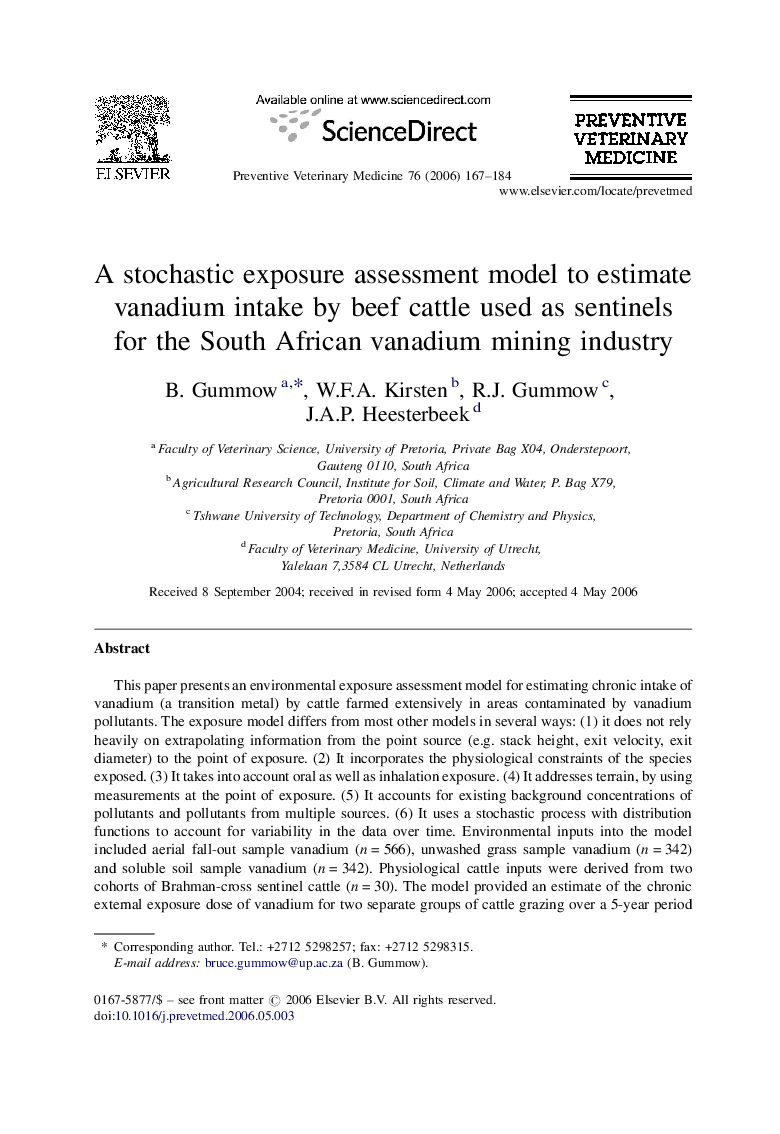| Article ID | Journal | Published Year | Pages | File Type |
|---|---|---|---|---|
| 2453602 | Preventive Veterinary Medicine | 2006 | 18 Pages |
This paper presents an environmental exposure assessment model for estimating chronic intake of vanadium (a transition metal) by cattle farmed extensively in areas contaminated by vanadium pollutants. The exposure model differs from most other models in several ways: (1) it does not rely heavily on extrapolating information from the point source (e.g. stack height, exit velocity, exit diameter) to the point of exposure. (2) It incorporates the physiological constraints of the species exposed. (3) It takes into account oral as well as inhalation exposure. (4) It addresses terrain, by using measurements at the point of exposure. (5) It accounts for existing background concentrations of pollutants and pollutants from multiple sources. (6) It uses a stochastic process with distribution functions to account for variability in the data over time. Environmental inputs into the model included aerial fall-out sample vanadium (n = 566), unwashed grass sample vanadium (n = 342) and soluble soil sample vanadium (n = 342). Physiological cattle inputs were derived from two cohorts of Brahman-cross sentinel cattle (n = 30). The model provided an estimate of the chronic external exposure dose of vanadium for two separate groups of cattle grazing over a 5-year period (1999–2004) immediately adjacent (median dose = 2.14 mg vanadium/kg body weight/day) and 2 km away (median dose = 1.07 mg/kg/day) from a South African vanadium-processing plant, respectively. The final output of the model is a distribution curve of the probable vanadium intake based on the variability within the inputs over the 5-year period of the study. The model is adaptable enough for application to other transition metals and species (including man), and could be used as an alternative to plume-dispersion modelling.
